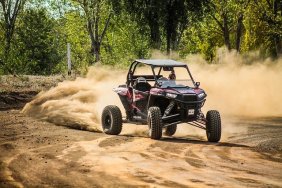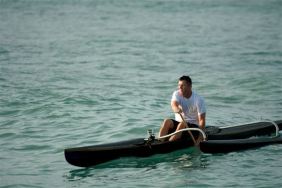 Anyone who has had a love affair with the outdoors is mystified by sand dunes. Created by thousands of years of the forces of nature, these stunning displays of the power of the earth are alluring to everyone, but for off road enthusiasts the temptation is simply too much to resist. At some point, all of us are drawn to ride the dunes.
Anyone who has had a love affair with the outdoors is mystified by sand dunes. Created by thousands of years of the forces of nature, these stunning displays of the power of the earth are alluring to everyone, but for off road enthusiasts the temptation is simply too much to resist. At some point, all of us are drawn to ride the dunes.
With sandy havens dotted across the nation, from Silver Lake in Michigan to St. Anthony’s in Idaho, Winchester Bay of Oregon down to California’s jewel of Glamis, there are plenty of opportunities for off road enthusiasts to experience the thrill of wind in your face and sand in your teeth. Due to their location, dune rides typically require some prep and planning for most people, meaning that these trips require a little more preparation than your typical weekend ride due to travel distance and intricacies of riding in soft, constantly changing ground.
Here’s some basic steps to ensure your dune ride goes off without a hitch:
1. Get Your Paperwork in Order: Many dune areas are part of a National Forest or are heavily monitored by enforcement officials. It’s important to ensure that any required registration is current and stickers are in place long before you load up to leave. If you’re riding dunes out of state, check if a permit is required, or any safety certifications. Oregon, for example, requires all riders of Class I, II and III ATV’s to hold a current rider safety certification from their state program. Get caught riding without it and your riding trip to the Oregon Coast will be brought to a halt.
2. Tire Prep: Depending on what and how you ride, tires are a topic of constant debate when it comes to dune riding. Many newer quads have plenty of power and torque for experienced riders to get away with running knobby tires on the dunes. However, paddles give an advantage of float and traction on q unique surface that many riders prefer. No matter which you choose, be sure they hold air, have adequate tread or paddle depth and bring a spare.
3. Air Filters: Depending on what you ride and the type of air filter you run, be prepared to take some extra air filters along for the ride, as they may become clogged quickly.
4. Safety Gear: Different dune areas have different requirements for safety equipment. For example, as we talked about in Oregon, you’re required to have a rider safety card, but not required to wear a helmet (though I highly recommend it.) Alternatively, UTV riders are required to have a fire extinguisher on board. Learn the safety must haves for where you’re riding and be prepared. All dune areas also require safety whip flags to allow for visibility when cresting dunes. You might even consider a lighted whip to make sure you’re seen on night rides.
5. Learn to Ride for the Conditions: Sand dunes offer a completely unique set of riding conditions. Due to wind, terrain is constantly changing (it’s what made them, after all) and lighting at certain times of the day can cause you to completely lose sight of the edge. Learn your limits and be aware of terrain and other people that are always moving. Always slow when cresting dunes, avoid getting near razorbacks and know where you’re going. Picking a line and sticking to it, as well as travelling with a buddy, greatly reduces your chances of getting lost out there.
The dunes – whether you’re riding St. Anthony or Oceano – are a must ride experience for any off road enthusiast. But before you go throw some rooster tails, take the time to prepare so it’s one of those stories that starts out with a smile rather than a grumble.








